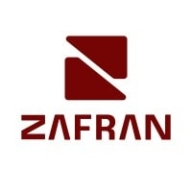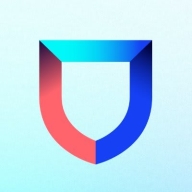


Claroty Platform and Lacework FortiCNAPP are competitors in the cybersecurity space. Lacework FortiCNAPP emerges as the superior option due to its advanced features and cloud security capabilities.
Features: Claroty Platform offers comprehensive asset visibility, threat detection, and a robust focus on industrial environments, providing valuable insights and secure remote access. Lacework FortiCNAPP excels in integrated cloud security, high scalability, and compliance with various security standards, enhancing its appeal for cloud-centric operations.
Room for Improvement: Claroty Platform could improve its integration with other security tools, expand its scalability for larger enterprises, and enhance its vulnerability management interface. Lacework FortiCNAPP may focus on refining its alert systems to reduce false positives, improving its UI for better user experience, and enhancing its support for hybrid environments.
Ease of Deployment and Customer Service: Claroty Platform offers straightforward deployment and extensive support, with detailed documentation aiding the setup in industrial settings. Lacework FortiCNAPP provides seamless cloud-based deployment, proactive customer service, and excellent integration with cloud-native platforms, catering to cloud environments effectively.
Pricing and ROI: Claroty Platform is a cost-effective solution with lower initial setup costs, offering good ROI for IoT and OT-focused applications. Lacework FortiCNAPP, though with higher setup costs, offers superior ROI through its comprehensive cloud security features, making it a worthwhile investment for cloud-focused infrastructures.



Zafran Security integrates with existing security tools to identify and mitigate vulnerabilities effectively, proving that most critical vulnerabilities are not exploitable, optimizing threat management.
Zafran Security introduces an innovative operating model for managing security threats and vulnerabilities. By leveraging the threat exposure management platform, it pinpoints and prioritizes exploitable vulnerabilities, reducing risk through immediate remediation. This platform enhances your hybrid cloud security by normalizing vulnerability signals and integrating specific IT context data, such as CVE runtime presence and internet asset reachability, into its analysis. No longer reliant on patch windows, Zafran Security allows you to manage risks actively.
What are the key features of Zafran Security?
What benefits can users expect from Zafran Security?
In industries where security is paramount, such as finance and healthcare, Zafran Security provides invaluable protection by ensuring that only exploitable vulnerabilities are addressed. It allows entities to maintain robust security measures while allocating resources efficiently, fitting seamlessly into existing security strategies.
The Claroty Platform is tailored for monitoring and securing industrial control systems. It offers deep visibility into OT networks, enabling effective anomaly detection and vulnerability assessments. Its user-friendly interface and robust reporting tools facilitate easy management and compliance, enhancing organizational efficiency and cybersecurity posture in industrial environments.
Lacework FortiCNAPP provides robust cloud security, combining vulnerability management and multi-cloud insight with user-friendly controls, machine learning detection, and compliance support.
Lacework FortiCNAPP specializes in cloud security by merging machine learning anomaly detection with agent-based vulnerability management to offer detailed alerts and compliance reports. Its comprehensive approach allows continuous monitoring across AWS and Kubernetes, providing insights from an attacker's perspective. The platform offers automation and seamless Slack integration, facilitating collaborative and efficient cloud security management. Users value its ability to handle multi-cloud environments and scan IAC scripts, configurations, and compute nodes across AWS and GCP.
What are the key features?Organizations across sectors leverage Lacework FortiCNAPP for cloud security, focusing on compliance, security posture, and vulnerability management. It is widely used for monitoring AWS and Kubernetes environments, scanning IAC scripts, configurations, and securing compute nodes. It supports multi-cloud security posture management and log ingestion, enabling companies to maintain strong cloud infrastructures without dedicated security layers.
We monitor all Vulnerability Management reviews to prevent fraudulent reviews and keep review quality high. We do not post reviews by company employees or direct competitors. We validate each review for authenticity via cross-reference with LinkedIn, and personal follow-up with the reviewer when necessary.